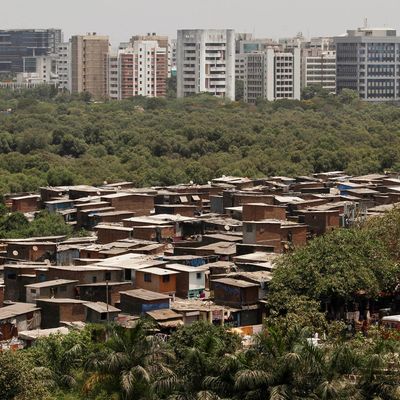
Despite the hysteria, it’s safe to say that tomorrow’s Mayan Doomsday will end up as nothing but the latest apocalyptic hype. But even after December 21, Earth will hardly be in the clear. While we may have dodged one gigantic, irreversible blow to humanity (for now, at least), various cities across the globe will continue to face actual existential threats to their survival. Perhaps sooner than we’d like to think.
Increasingly, we humans are living an urban existence. The 2012 “Future Proofing Cities” report produced by Britain’s Department for Economic Development reminds us that more than half of the world’s population already lives in cities. By 2050, that figure will be 75 percent.
Below, environmental scientists, food security experts, sociologists, and authors — people who have invested a lot of time and energy into thinking about the future — offer their ominous visions of what could await some of the world’s great metropolises in the years, decades, and centuries down the line. Here are some predictions to chew on while we empty out our doomsday shelters.
Prediction: By 2100, the summertime temperatures in New Delhi and Karachi could be physically unbearable.
Expert: Fen Montaigne, senior editor at Yale University’s online environmental magazine Yale Environment 360
How It’ll Happen: “If temperatures rise more than five degrees Fahrenheit by the end of the century, which is possible, these cities are going to experience the kind of temperatures that test the limits of human heat tolerance.”
Prediction: By 2016, Gaza City could be without fresh drinking water.
Expert: Fred Pearce, London-based journalist and author of When the Rivers Run Dry (Beacon Press)
How It’ll Happen: “Gaza’s one source of water, the rocks beneath it, is increasingly salty. As the city pumps out the water to survive, the water table falls ever lower and more and more seawater pours into the rocks. UN scientists say that the city could be uninhabitable by 2016.”
Prediction: By 2022, as a result of steadily increasing car traffic, Mexico City could be economically unviable.
Expert: Shin-pei Tsay, director of Cities and Transportation Energy and Climate Program, Carnegie Endowment for International Peace
How It’ll Happen: “It’s inconceivable for a city to be economically viable if it takes five hours to cross the city in a car.”
Prediction: By 2100, large parts of the Miami and New Orleans metropolitan areas could be under water.
Expert: Montaigne
How It’ll Happen: “If we get a three-to-six-foot sea level rise this century, which is very possible, Miami is in very deep trouble. A large part of the Miami area will be under water and New Orleans will flood during larger storms.” And when it comes to levees and flood protection, “Miami is far more exposed than New Orleans.”
Prediction: By 2030, because of extreme weather, high temperatures, flooding, and air pollution, Mumbai will be abandoned by everyone who can afford to evacuate.
Expert: Stan Cox, author of Losing Our Cool: Uncomfortable Truths About Our Air-Conditioned World and the upcoming Any Way You Slice It: The Past, Present, and Future of Rationing (May 2013)
How It’ll Happen: Energy production in Mumbai, 40 percent of which goes toward air-conditioning, has catalyzed scary feedback loops. “Mumbai has such a huge demand for electricity that the city is turning to hydroelectric power. Ironically, this ends up flooding a lot of land [outside the city]. People lose their land, and they go straight to Mumbai as refugees, and increase the demand for energy further there.” And then there are the side effects of burning fossil fuels. Brown, sulfurous clouds float out into the Arabian Sea, causing unusually large storms. “If one of those [storms] were to make landfall around Mumbai, the surge there would cause a Sandy-type situation. It all could be a big mess.”
Prediction: By 2022, food price inflation will be through the roof in the cities of Sub-Saharan Africa.
Expert: Tim Benton, professor of population ecology at Leeds
How It’ll Happen: “Looking at the way the weather is changing, and looking at the way demand is growing, we sure as hell know it is going to get a lot more difficult [to feed city dwellers]. Perhaps most difficult in the very big cities which rely on importing food from outside the city boundary.”
Prediction: By 2017, New York City’s financial system will have collapsed.
Expert: James Howard Kunstler, Clusterfuck Nation blogger and author of books including The City in Mind: Notes on the Urban Condition and The Long Emergency
How It’ll Happen: “You just can’t run a money system on financial fraud forever. I’m not convinced that the climate issue will be the first thing to destabilize the city. At this moment, I think that the problems in finance are overtaking the other problems, and will probably create more mischief in the short term.”





























